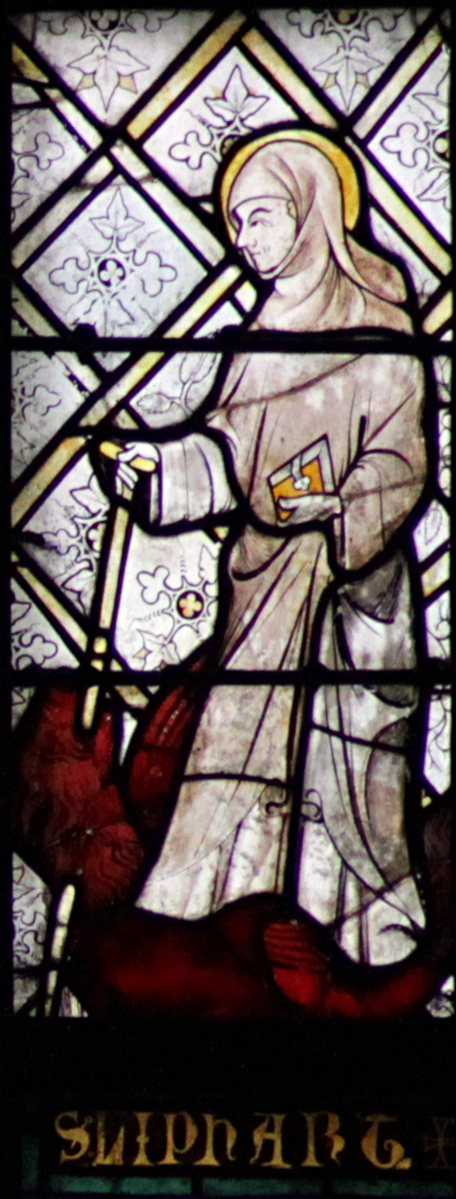Liphardus on:
[Wikipedia]
[Google]
[Amazon]
Saint Liphardus (or Lifard, Lifardo, Lifardus, Lifart, Lifhard, Lifhart, Liphard, Liphart, Lyphard) was a 6th-century lawyer, hermit and abbot in
 The hagiographer
The hagiographer
Meung-sur-Loire
Meung-sur-Loire () is a commune in the Loiret department, north-central France.
It was the site of the Battle of Meung-sur-Loire in 1429.
Geography
Meung-sur-Loire lies 15 km to the west of Orléans on the north bank of the river Loir ...
near Orléans
Orléans (,"Orleans"
(US) and Le Mans Le Mans (; ) is a Communes of France, city in Northwestern France on the Sarthe (river), Sarthe River where it meets the Huisne. Traditionally the capital of the Provinces of France, province of Maine (province), Maine, it is now the capital of ...
, and a close relative of King (US) and Le Mans Le Mans (; ) is a Communes of France, city in Northwestern France on the Sarthe (river), Sarthe River where it meets the Huisne. Traditionally the capital of the Provinces of France, province of Maine (province), Maine, it is now the capital of ...
Clovis I
Clovis (; reconstructed Old Frankish, Frankish: ; – 27 November 511) was the first List of Frankish kings, king of the Franks to unite all of the Franks under one ruler, changing the form of leadership from a group of petty kings to rule by a ...
.
His younger brother was Saint Leonard
Leonard of Noblac (also Leonard of Limoges or Leonard of Noblet; also known as Lienard, Linhart, Lenart, Leonhard, Léonard, Leonardo, Annard; died 559) is a Frankish saint closely associated with the town and abbey of Saint-Léonard-de-Noblat, ...
.
Liphard studied literature and the law as a young man, and because of his capability and his noble birth he was appointed a governor and judge in Orléans.
However, around the age of 40 he became tired of the worldly life, left his job and was ordained a deacon.
Soon after he entered the monastery of Saint Mesmin
Mesmin (Maximin, Maximinus) (died AD) is a French saint associated with the Bishopric of Orléans. He was the second abbot of Micy Abbey, founded by his uncle, Euspicius.
Life
Mesmin was the nephew of Euspicius, archpriest of Verdun. When the c ...
, while his brother Leonard went to Aquitaine.
Liphard, accompanied by a disciple named Urbice, then withdrew to a place named Meun eung-sur-Loire four leagues from Orléans, where there was an old chateau that had been ruined by the Huns and Vandals during the wars with Attila.
In this solitary place Liphard built a small cell, where he lived an austere life of contemplation.
The bishop of Orléans heard of Liphard's virtue and perfection, and made him a priest so he could teach others.
Liphard continued his studies in his lonely cell.
Nearby there was a furious serpent or dragon that terrified all the people of the neighborhood, crawling or rolling near the fountain where they used to draw water.
Only Liphard and his disciple Urbice dared go near the fountain.
One day Liphard saw in a vision that the dragon was coming towards his cell to do harm.
Liphard sent Urbice to the place where he knew he would meet the dragon.
Urbice went there, unsuspecting, but when he saw the dragon coming towards him he fled back to Liphard in panic.
Liphard smiled, blamed him for having too little faith, gave him a rod and told him to plant it before the furious beast.
Urbice did as he was told, while Liphard prayed to God to kill the dragon.
When the dragon saw the rod he tried to break it and shake it to pieces, but instead hung himself from the rod and died.
A legion of devils who were living in the dragon came out howling and crying that they had been driven from their home.
The peasants of the neighborhood heard the clamour and were afraid that the dragon had hurt Liphard, but when the arrived they found him making his ordinary prayers while the dragon lay dead beside him.
Later, with his disciple Saint Urbice, Liphard founded the monastery of Meung-sur-Loire, of which he became abbot.
After his death Urbice succeeded him as abbot.
Monks of Ramsgate account
TheMonks of Ramsgate
St Augustine's Abbey or Ramsgate Abbey is a former Benedictine abbey in Ramsgate. It was built in 1860 by Augustus Pugin and is a Grade II listed building. It was the first Benedictine monastery to be built in England since the Reformation. In ...
wrote in their ''Book of Saints
St Augustine's Abbey or Ramsgate Abbey is a former Benedictine abbey in Ramsgate. It was built in 1860 by Augustus Pugin and is a Grade II listed building. It was the first Benedictine monastery to be built in England since the Reformation. In ...
'' (1921),
Butler's account
 The hagiographer
The hagiographer Alban Butler
Alban Butler (13 October 171015 May 1773) was an English Roman Catholic priest and hagiography, hagiographer. Born in Northamptonshire, he studied at the English College, in Douai, Douay, France where he later taught philosophy and theology. He s ...
(1710–1773) wrote in his ''Lives of the Fathers, Martyrs, and Other Principal Saints'' under June 3,
Notes
Citations
Sources
* * * * {{DEFAULTSORT:Liphardus 6th-century Frankish saints 6th-century deaths